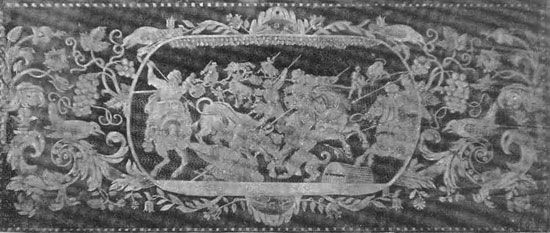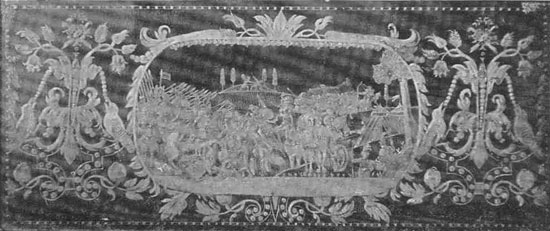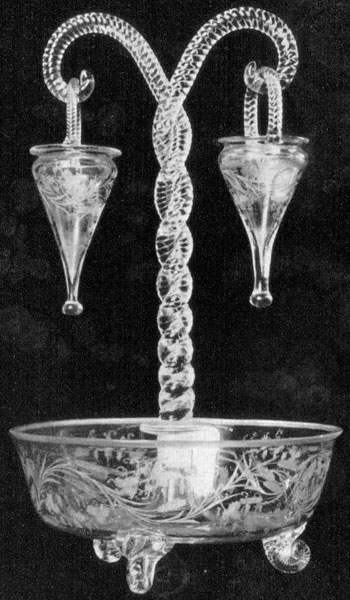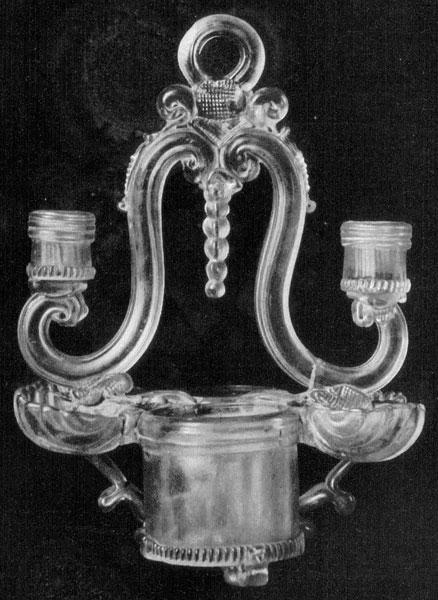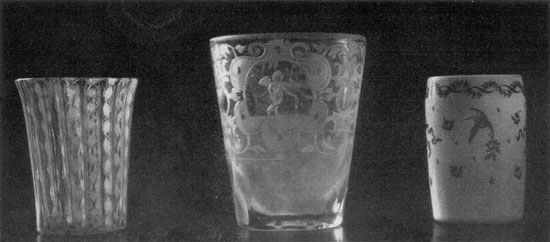|
It was not, however, till after 1771 that the finest pieces of La Granja glass were produced. In that year a new and extensive factory was set up by Charles III., that most munificent and energetic patron of Spanish art, founder of the great factory of Buen Retiro, initiator of the finest buildings in the capital and its surroundings. The new premises were magnificently planned, with numbers of ovens and adequate accommodation for the various artists and their assistants engaged in the manipulation and decoration of the pieces. The output was plentiful and varied. Long-necked decanters, flagons, beakers, tumblers, vases with two handles, covered bowls, made up a large part of the production. First class engravers were brought from abroad. Eder came from Sweden, and Sivert from France to direct the work of decoration. Designs consisting chiefly of garlands of foliage, floral knots, buds and rosettes were cut and frequently covered with gilding. In some cases the designs are merely laid on in gilt, in others the gilding is painted over in various colours, pink, white, blue, and red.
Bottles, flattened on four sides and painted, were made constantly. They resemble those made in Germany for liqueur stands, but they were usually smaller and were intended to hold perfume and toilet water. Very beautiful candlesticks and table ornaments were produced, some delicately engraved. others owing their beauty to the cunning manipulation of the glass itself. An example of this may be seen in No. vi., where pink is introduced into the foliage and the chain and pendants are light and delicate, and brilliantly transparent.
The centrepiece, in No. IV., is engraved in a light graceful design, while the winding of the glass strands in the middle is done with a pleasing delicacy and precision.
|
|
A large quantity of white opaque glass was produced by the addition of phosphorus to the mixture. This was chiefly made into goblets and beakers, which were frequently decorated with brilliant floral designs of red, blue and yellow. Opaque glass was also produced in different shades of blue, both dark blue and saxe blue. Some of the mugs made from it are flattened and decorated with filigree tracery. On another page of this issue are illustrated two covered bowls, gilded and painted in red and blue, which form part of a complete set which was made for the dispensary of the Royal Palace. On the covers is a garland of green leaves bound with blue and white ribbon (see illustration in Current Art Notes).
Notwithstanding the efforts made to place the enterprise on a satisfactory financial basis, the exclusive right of sale which the factory enjoyed in a wide area round the capital and the active interest taken in it by the sovereigns, the profits remained disappointingly low. A certain rector from Wiltshire who visited La Granja in 1786 tells us :—
|
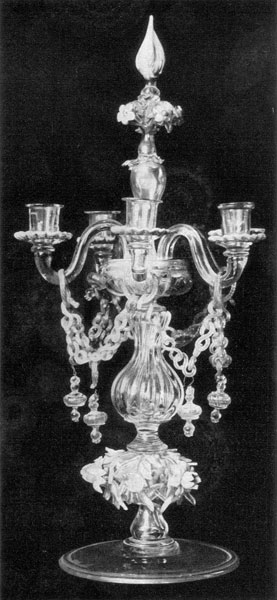
No. VI. — CANDELABRA FOR FIVE LIGHTS
END OF EIGHTEENTH CENTURY
|
